Pedro Soriano, OH (1515-1588) was a Catholic religious brother who succeeded John of God as the First General of Brothers Hospitallers of Saint John of God.
Contents

Pedro Soriano, OH (1515-1588) was a Catholic religious brother who succeeded John of God as the First General of Brothers Hospitallers of Saint John of God.

Pedro Soriano was born in 1515 and when he was 40 he decided to leave the military service to join John of God's disciples in Granada. Due to his enthusiastic soul, he was one of the greatest collaborator of the order mostly in Italy where contributed to found several hospitals of Brothers Hospitallers of St. John of God especially in Rome, Milan and Florence. In 1570 Padre Soriano and Padre Sebastiano Arias were sent to Rome, together with John of God, to apply for the pontificial approval in order to build San Giovanni Calibita hospital, in Tiber Island, which was allowed with the papal bull named Licet et debito.
During the first meeting of the order, which was held in Rome on the 23 June 1587, Pedro Soriano was elected First General of the order. He died in August 1588. [1]
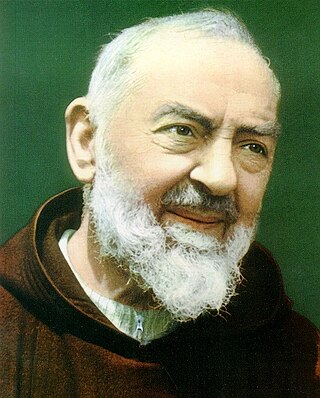
Francesco Forgione, OFM Cap., better known as Padre Pio and as Saint Pius of Pietrelcina, was an Italian Franciscan Capuchin friar, priest, stigmatist, and mystic. He is venerated as a saint in the Catholic Church, celebrated on 23 September.

The Tiber Island is the only river island in the part of the Tiber which runs through Rome. Tiber Island is located in the southern bend of the Tiber.
Giovanni Battista Orsenigo (1837–1904) was an Italian monk from a family of thirteen, although four of his siblings did not reach adulthood. He had several jobs before realizing his vocation and becoming a monk/dentist among the Brothers Hospitallers of Saint John of God. He is most known for being in the Guinness Book of Records as the most dedicated dentist. In total he collected 2,000,744 of the teeth he extracted.
Cornelio Fabro CSS was an Italian Catholic priest of the Stigmatine Order and a scholastic Thomist philosopher. He was the founder of the Institute for Higher Studies on Unbelief, Religion and Cultures.
The Knights of Justice or Professed Knights, form the first of the three classes of members of the Sovereign Military Order of Malta together with the professed conventual chaplains. They make vows of poverty, chastity, and obedience. "They are religious in all respects and they comply with the universal and particular norms that concern them."

The Brothers Hospitallers of Saint John of God, officially the Hospitaller Order of the Brothers of Saint John of God, are a Catholic religious order founded in 1572. In Italian they are also known commonly as the Fatebenefratelli, meaning "Do-Good Brothers", and elsewhere as the "Brothers of Mercy", the "Merciful Brothers" and the "John of God Brothers". The order carries out a wide range of health and social service activities in 389 centres and services in 46 countries.
Battistina Vernazza was an Italian canoness regular and mystical writer.
The Badoglio Proclamation was a speech read on Ente Italiano per le Audizioni Radiofoniche (EIAR) at 19:42 on 8 September 1943 by Marshal Pietro Badoglio, Italian head of government, announcing that the Armistice of Cassibile between Italy and the Allies signed on the 3rd of September had come into force. It followed a speech on Radio Algiers by U.S. General Dwight D. Eisenhower at 18:30 also announcing the armistice.
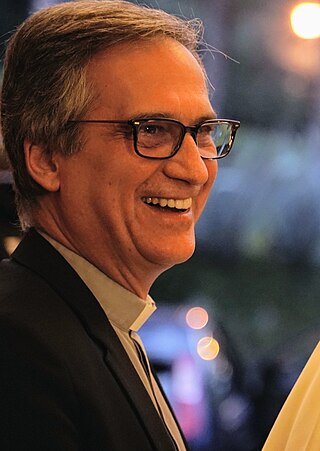
Dario Edoardo Viganò is an Italian Catholic priest, writer and university teacher. He was named Director of Vatican Television Center in 2013. He served as the first Prefect of the newly established Secretariat for Communications from 27 June 2015 to 21 March 2018, resigning "a week after his mishandling of a letter from retired Pope Benedict XVI provoked a global outcry".
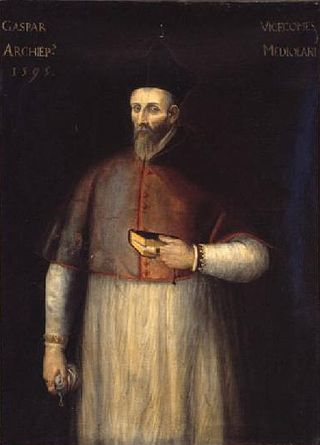
Gaspare Visconti was the Archbishop of Milan from 1584 to 1595.
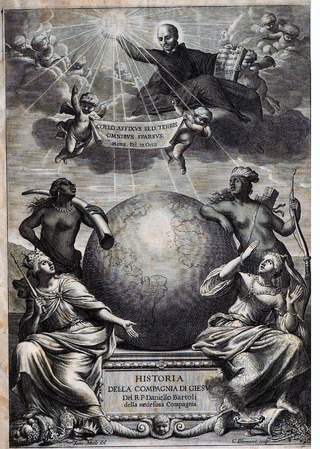
The monumental Istoria della Compagnia di Gesu, in 6 folio volumes by the Jesuit man of letters and historian Daniello Bartoli is the most extensive classic of Italian literature, over ten thousand pages long. It begins the centenary history of the Jesuits between 1540 and 1640 with an authoritative if somewhat ponderous biography of the founder Ignatius Loyola.

The hospital of San Giacomo in Augusta, also known as San Giacomo degli Incurabili was a historic hospital located in Rome.

Giacomo Bosio (1544–1627) was a brother of the Order of St. John of Jerusalem and the historian of this order. He was the uncle of the Maltese antiquary Antonio Bosio.
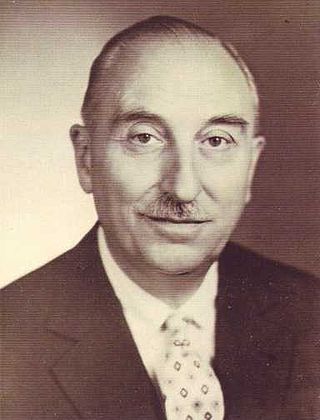
Giovanni Borromeo was an Italian physician. In 2004 Yad Vashem recognized him as a “Righteous among the Nations” for saving five members of the Almagià and extended family. Borromeo had been a student and assistant of Marco Almajà, a highly respected professor of physiopathology at the University of Rome.

Fatebenefratelli Hospital is a hospital located on the western side of the Tiber Island in Rome. It was established in 1585 and is currently run by the Brothers Hospitallers of Saint John of God. The hospital is known for having sheltered Jews during the Holocaust by diagnosing them with a fictitious disease called "Syndrome K".

Saint Dominic in Soriano was a portrait of Saint Dominic (1170–1221) painted in 1530. It is an important artefact in the Dominican friary at Soriano Calabro in southern Italy. It was believed to be of miraculous origin, and to inspire miracles. It was the subject of a Roman Catholic feast day celebrated on 15 September from 1644 to 1913. Its miraculous origin was the subject of several 17th-century paintings. Several ecclesiastical buildings have been named after it.
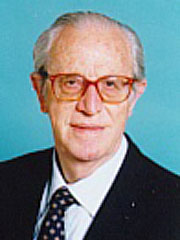
Adriano Ossicini was an Italian partisan, politician, psychiatrist, academic, and Minister for Family and Social Solidarity in the Dini Cabinet.

Eugenio Gerli was an Italian architect and designer. In an intense working life spanning more than six decades, Eugenio Gerli explored many different areas of his profession. He built villas, apartment blocks, office blocks, factories, banks and stores, and also restored historic buildings. He often completed his works with custom-made interiors and furniture.This diverse range of projects inspired his industrial design and today many have become icons, like the S83 chair, the PS 142 armchair Clamis, the Jamaica cabinet and the Graphis System.

Pedro Tenorio, sometimes called Pedro Díaz de Tenorio, was the bishop of Coimbra from 1371 to 1377 and archbishop of Toledo from 1377 until his death. Pedro was educated in exile in France and Italy. He fought in the Castilian Civil War in 1367 and obtained a doctorate in canon law in 1368. In the Western Schism, he argued the conciliarist position. He played a leading role in the regency of Henry III in 1391–1393. He is remembered primarily as an administrator and builder whose legacy is bridges, towns, churches, hospitals and castles. According to the Diccionario biográfico español, he was "one of the great archbishops of Toledo".